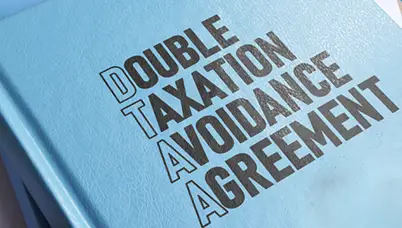How bad can it get?
Posted On Wednesday, Nov 04, 2009
A lot has been talked about the unprecedented money supply growth and its eventual translation to inflation. In History, there have been episodes of currency crises in different parts of the globe on account of run away increase in money supply resulting from printing more money. A few of the occurrences turned really worse and were identified as era of "hyperinflation". To recall a few, Zimbabwe experienced hyperinflation for much of this decade and not to forget the well-known Germany’s Weimar Republic hyperinflationary period in the 1920s.
| Country | Month with highest inflation rate | Highest monthly inflation rate | Equivalent daily inflation rate | Time required for prices to double |
| Hungary | July 1946 | 1.30 x 1016% | 195% | 15.6 hours |
| Zimbabwe | Mid-November 2008 (latest measurable) | 79,600,000,000% | 98.0% | 24.7 hours |
| Yugoslavia | January 1994 | 313,000,000% | 64.6% | 1.4 days |
| Germany | October 1923 | 29,500% | 20.9% | 3.7 days |
| Greece | November 1944 | 11,300% | 17.1% | 4.5 days |
| China | May 1949 | 4,210% | 13.4% | 5.6 days |
Hyperinflation is just inflation at an extremely high rate. Usually this also means the inflation is out of control and its level is not precisely predictable.
There is no precedent for the current world money order. The magnitude of increase in money supply has been much higher this time around. However, history provides us some insights to how worse can it get.
Hyperinflation - Germany’s Weimar Republic (1921-23)
When it comes to Hyperinflation, Germany’s Weimar Republic era of 1921-23 serves as perhaps the best documented cases in modern history. While there is a lot of information in the public domain, this was recently described in a recent article by Peter Krauth. Many are unaware of the dire consequences of hyperinflation; a glimpse at what happened in Germany can be hair-raising.
During the World War I in 1914, Germany opted to finance the war by borrowing rather than increasing taxes. The German policy makers chose borrowing because they expected to win the war and intended to force the losers to pay for the cost of the war. It was thus logical to the policy makers to use borrowing rather than taxation.
But Germany lost the war and the victors imposed heavy reparation payments upon her. The reparation payments were perceived as unfair in Germany and the social democratic government was reluctant to impose the burden of their payment upon the German population.
The government, strapped for funds, resorted to printing money. The value of the mark relative to other currencies fell thereby increasing the cost of imported goods. Prices rose increasing the cost of running the government. This necessitated the printing of even more money. Prices rose further and the exchange rates for the mark dropped even more. The result was hyperinflation.
At first, Germans reacted to the higher prices by economizing and reducing their consumption. But when they realized that it was not just a matter of some things being more expensive but instead that the mark was losing value they reacted by spending their marks as fast as possible. This meant that there was little constraint on prices.

There were winners as well as losers in this hyperinflation. Those on fixed incomes and who were owed a specific amount of money found that the real value of their holdings reduced to zero. But those who owed money found their debt effectively wiped out.
The German mark devalued significantly in terms of gold prices. The paper mark/gold mark ratio went from a one-to-one ratio in 1921, all the way to a one-to-1.0 trillion ratio in 1923.
Just imagine what would happen to gold in any remotely comparable situation involving the U.S. Dollar. The dollar acts as a world reserve currency. There has been an unprecedented and explosive growth in money supply. The dollars are being created just by printing more of them without any asset backing it. They are nothing more than pieces of paper with black ink.
The U.S has been accumulating deficits over years. The deficit is likely to increase over $2 trillion; worrying its creditors. The dollar holds its value only as long as the greenback’s holders maintain their faith in the currency. The moment people decide they don’t want your dollars, they become worthless, or at least worth much less.
As seen in the above example on Germany, currencies lost value as their quantity of the money in system increased considerably. In that case, it will take a lot more dollars today to buy the same thing one bought with fewer dollars earlier.
There have been evidences of currency losing their entire value creating a hyper inflationary scenario. Like in Zimbabwe, people carried sacks full of notes to pay for their daily purchases. Also, during the Weimar mark inflation, people pushed wheelbarrows full of German marks to the bakery just to purchase a loaf of bread.
Is the US a banana republic?
A currency meltdown occurs when governments face overwhelming gaps between revenues and expenditures; foreign investors abandon the currencies as they race for the exit, leaving a trail of worthless paper.
A decline in the value of dollar will affect the entire global economy. The US dollar acts as the world reserve currency and most of the world trade happens through exchange of dollar currency. China with USD 2 trillion* of US Dollar notes will be the worst affected. That is why the Chinese government is buying hard assets - including gold.
Gold is the only time-tested currency that can act as a store of value during times of hyperinflation. Are we certain that the US dollar will collapse? Nothing is definite, and neither do we know when such an event could occur. But better to buy your "insurance" - in the form of owning gold.
We recommend that you allocate at least 10-20% of your investments to gold and insure your wealth from being eroded from a possible inflationary threat.
Disclaimer:
The views expressed in this article are the personal views of the Fund Manager of Quantum Gold Fund. The views constitute only the opinions and do not constitute any guidelines or recommendation on any course of action to be followed by the reader. This information is meant for general reading purpose only and is not meant to serve as a professional guide/investment advice for the readers. This article has been prepared on the basis of publicly available information, internally developed data and other sources believed to be reliable. Readers are advised to seek independent professional advice and arrive at an informed investment decision before making any investments. Please visit – www.quantumamc.com/disclaimer to read scheme specific risk factors.
Related Posts
-

Navigating NRI Investments : Understanding Double Taxation Avoidance Agreement (DTAA)
Posted On Friday, May 09, 2025
A recent ruling by the Income Tax Appellate Tribunal (ITAT), Mumbai around capital gains arising out of redemption of mutual fund units by NRI investors are not taxable in India
Read More -

Debt Monthly View for April 2025
Posted On Wednesday, May 07, 2025
In April 2025, the Reserve Bank of India...
Read More -

Equity Monthly View for April 2025
Posted On Wednesday, May 07, 2025
April 2025 witnessed a reversal in FPI flows and an ease of global tariff related uncertainties, leading to a rise in broader indices.
Read More




